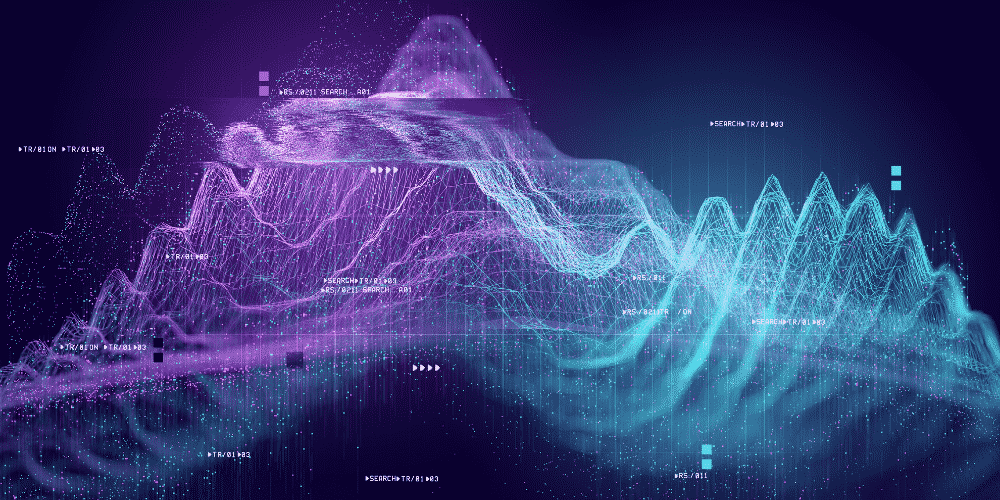Systems Thinking and Network Science: 3 Common Areas of Focus

“Systems thinking is a discipline for seeing wholes. It is a framework for seeing interrelationships rather than things, for seeing ‘patterns of change’ rather than ‘static snapshots.”
⏤ Peter Senge Tweet
Systems thinking is getting more popular than ever as more and more people realize its insight. Here at VNL, we’ve been using systems thinking for more than a decade in our work as network scientists. With a significant focus on the principle of interconnectedness, these two fields of thinking have a substantial amount of overlap. In this article, we’re detailing just a few of the many things that systems thinking and network science have in common with each other.
What is Systems Thinking? What is Network Science?
Before we dig into details, let’s make sure we understand these terms in the same way. Systems thinking is a holistic approach to analysis that focuses on understanding how a system’s parts interact, connect, and exchange information, resources, and ideas to create the system’s output. For example, you can use systems thinking to analyze homelessness by considering all the indirect factors that affect the problem instead of only considering the direct loss of housing security. These factors include food security, employment, mental health, and more.
Network science is a field that studies complex networks to identify trends and predictive theories about network form, function, and outcomes. For example, you can use network science to analyze how a person’s support network of friends and family impacts their health and well-being over time. Here are some key similarities between systems thinking and network science.
Systems Thinking and Network Science Both Believe Connectivity is Key
In both of these fields, interconnections and connectivity is an overwhelming area of focus. Rather than viewing a problem in terms of single, discrete entities, systems thinkers and network scientists consider the interconnections that exist and the specific ways they mediate the exchange flow of ideas, resources, and other concepts. All systems are fundamental a network – an interconnected set of entities, allowing for social network analysis techniques to shed light on their inner function. If you want to understand how a system ticks, you have to look at how its parts function together – you cannot look at the individual nodes alone.

Emergence is a Major Component of Systems Thinking and Network Science
The whole is greater than the sum of its parts. This statement is sometimes overused, but to a systems thinker, it could not be more accurate. When you take different people, ideas, and organizations and make them work together, their diverse backgrounds and perspectives can interact to create innovative and surprising solutions and ideas. We call this emergence, and it is a central principle in network theory as well. One of the most significant benefits of taking the network form is its ability to introduce you to new ideas and ways of thinking.
For example, the healthcare industry is increasingly using networks to bring together community stakeholders and broaden the perspectives they consider in their community health planning. After talking with minority communities and learning about the cultural barriers they face to mental health, they created new programs rooted in this understanding to serve these communities better. These solutions emerged from a unique exchange of ideas and perspectives that would never have been possible with the groups working in silos. Examples like these clearly demonstrate the power of system thinking.
Context Matters For System Thinkers and Network Scientists
Systems thinkers and network scientists focus on interconnections – but they also keep in mind the broader context beyond the network itself. They consider questions like:
- What other entities influence the network, even without being directly connected?
- What mental models, ideas, assumptions, and values direct and limit our network?
- How does the history of this network and community impact how we approach our work?
- Do other systems or ecosystems overlap or impact the network or system of interest?
- How have issues of equity, power, and discrimination in the past created problems today?
One way to provide this contextual insight is to leverage qualitative research methods like interviews and focus groups in addition to quantitative social network analysis. This includes information about the history of a network, the perspective of its members, and other information that can change the meaning of data collected through more traditional means. Whatever you do, be sure you consider the context of the network or system you seek to understand.
Systems Thinking & Network Science Have a Lot in Common
As you can see, these two perspectives have a great deal in common. By keeping systems thinking and network science in mind when considering your networks, you can increase the degree of understanding you have about the problems you face and potential solutions you can create. In this sense, using these two ways of thinking makes its own kind of emergence, with new and innovative solutions arising from the intersection of these perspectives.
If you consider yourself a systems thinker, consider finding new ways to integrate network science and social network analysis into your work. Tools like PARTNER can provide visibility into the structure and quality of your connections so you can make more informed decisions about the systems that affect your work. Learn more about PARTNER here, or click here to reach out to our team. We wish you the best of luck in all of your systems thinking and network science endeavors!

About the Author: Alex Derr, M.P.A.
Director of Marketing & Communications
Alex joined VNL in 2017, originally supporting our events. He now helps manages our communications and marketing strategy and content development work. Alex creates blogs, infographics, reports, and other content while managing our web and social media presence. He also runs our email marketing campaigns, tracks analytics, and conducts market research to drive our strategy. He supports our entire team with copywriting, graphic design and research, and helps with events, webinars, demos, and other online learning. When he isn’t at work Alex spends his time climbing 14ers (30 done, 28 to go!) and blogging on his own website, The Next Summit Blog.




